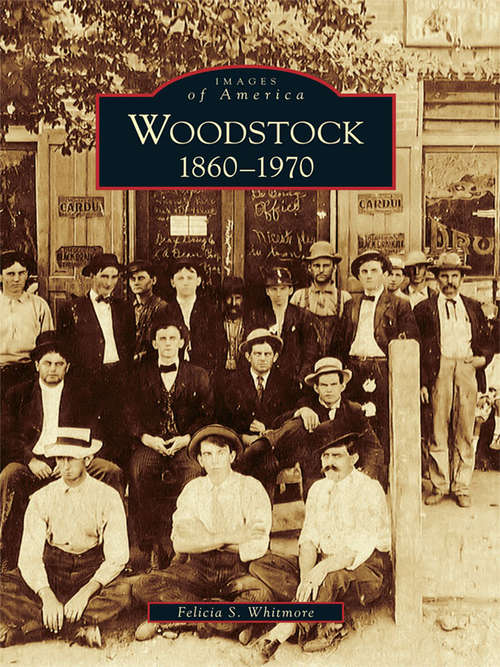Woodstock: 1860 - 1970
By:
Sign Up Now!
Already a Member? Log In
You must be logged into Bookshare to access this title.
Learn about membership options,
or view our freely available titles.
- Synopsis
- In 1830, settlers in Woodstock first cleared the land for crops and livestock. Paths were crude and rough. In the mid- to late 1800s, the small, agricultural community grew into a town with grocers, blacksmiths, mills, and livery stables with help from the railroad, which was a trading and communication line to the new town. Before the Civil War, the cotton industry boomed; in 1860, there were 33 cotton mills in Georgia employing about 2,800 workers. But by the 1930s, Woodstock had suffered the drastic effects of the Depression, and the cotton industry declined. In the 1940s, after the Depression left many farmers broke, poultry became the new thriving business. The depot, which is on the National Register of Historic Places, was built in 1912 by the Louisville and Nashville Railroad to replace the depot of 1879. It served as the center of shipping and receiving freight and the arrival and departure point for civilian passengers and military personnel.
- Copyright:
- 2009
Book Details
- Book Quality:
- Publisher Quality
- ISBN-13:
- 9781439635643
- Related ISBNs:
- 9780738554259
- Publisher:
- Arcadia Publishing
- Date of Addition:
- 06/11/16
- Copyrighted By:
- Felicia S. Whitmore
- Adult content:
- No
- Language:
- English
- Has Image Descriptions:
- No
- Categories:
- History, Nonfiction, Travel, Art and Architecture
- Submitted By:
- Bookshare Staff
- Usage Restrictions:
- This is a copyrighted book.
Reviews
Other Books
- by Felicia S. Whitmore
- in History
- in Nonfiction
- in Travel
- in Art and Architecture
